In recent years, discussions regarding the manifestations and prevalence of healthcare disparities have noticeably increased in medical literature. One cause of these disparities is bias, which challenges us to question how much we really understand the nature of how bias is shown.
The fundamentals of bias
Bias is defined as an unreasoned and unfair distortion of judgment that may be exercised in favor of or against one person, thing or group compared to another. While the word itself is neutral, bias is typically regarded as negative or unfair. Bias can be possessed by an individual, a group, an institution or, in its broadest form, a society.
There are two common forms of bias: conscious bias, also known as explicit bias, and unconscious bias, also known as implicit bias. Explicit bias is a consciously held prejudicial belief or attitude, and it is the traditional form of bias most people conceive when they think about this topic. While explicit bias is possessed within the awareness of the individual, it may or may not be acted upon. In fact, awareness is a powerful force in mitigating its effects.1
Implicit bias is an unknown or unacknowledged form of bias. The holder of implicit bias is unaware they possess partiality, allowing themself the illusion of being fair. However, objective examination of their acts may reveal a very different reality. Implicit bias most often manifests in the form of prejudicial instincts about groups of people. This is a universal phenomenon believed to be a part of human psychology rooted in mental maps and automatic processing. Essentially, these processes allow individuals to quickly sort others into recognizable groups with stereotypical traits. This phenomenon is imperfectly understood but is an inherent part of human behavior. Implicit bias is far more commonly expressed than explicit bias and is insidious in nature.
It’s important to appreciate that implicit bias does not require animus. It is expressed automatically in a subconscious manner. All that’s required is knowledge of and belief in a stereotype or implicit attitude.
Bias in medical research and applications
Within medical research, biases and confounders may impair us from understanding the truth of what is being studied and can steer us from knowing what best practices should be.
Information bias is defined as “Any systematic difference from the truth that arises in the collection, recall, recording and handling of information in a study, including how missing data is treated.”1 These variations are most often due to:
- Misclassification bias: categorization of a subject into an incorrect cohort which may alter the observed outcome between groups and the outcome being studied.
- Observer bias: discrepancies from the truth that are observed or recorded into the data.
- Recall bias: systematic errors that become part of the recorded data due to participants recalling previous events inaccurately or incompletely.
Selection bias is another significant source of distortion in research. This type of bias “occurs when individuals or groups in a study differ systematically from the population of interest leading to a systematic error in an association or outcome.”1
We commonly see such bias in clinical trials where the group being studied varies in its composition significantly from the overall population. Data from the 2020 census captured that approximately 40% of the United States population identified as non-white. However, in the Federal Drug Administration’s 2020 data snapshot on diversity and inclusion in clinical drug trials, only 25% of participants were non-white.2 The FDA approved 50 new therapies in 2021. Of the 50 clinical trials, there were only 7 where patients who identify as Black, Asian or Hispanic all participated in percentages that approximated or exceeded their societal representation. Disparities in representation were most noticeable in oncology trials with Black participation at 4.1% and Hispanic participation at 6.9%. A retrospective study of all registered U.S. clinical trials from 2000–2020 (20,692 studies; ~4.76 million enrollees) revealed that only 43% reported data regarding race and ethnicity.5 The median combined participation by racial and ethnic minorities was well-below census representation at 27.6% (36% in the 2010 U.S. Census).6,7
Within radiology, adjustments were recently made regarding the inclusion criteria for Low Dose Lung Cancer Screening (LDLCS) by the United State Preventative Services Task Force (USPSTF). The National Lung Screening Trial (NLST) conducted between 2002– 2004 had 53,452 participants; however, only 4.4% of enrollees identified as Black (2,376). The NLST demonstrated a 16% reduction in lung cancer mortality with the use of LDLCS in patients 55–80 years old with a 30 pack-year smoking exposure who were active smokers or had quit within the past 12 years. In 2021, reanalysis of the data with a synthesized adjusted population of 13.4% Black participation demonstrated the study undervalued the impact of LDLCS with an estimated relative reduction in mortality of 18%—12.5% higher than the initial measured reduction of 16%. In populations such as Washington, D.C., which has a Black representation of 46.3%, the estimated reduction was determined to be 26%.8
Other studies have shown that Black Americans have a significantly higher baseline risk for developing lung cancer. In 2019, a study revealed that in patients diagnosed with lung cancer, 56% of white patients met criteria for LDLCS, while in Black patients, only 32% met criteria. This suggested that screening guidelines were too conservative for Black patients.10 Accordingly, the USPSTF changed the screening criteria, lowering the entry age from 55 years to 50 years and reducing smoking exposure from 30 pack-years to 20 pack-years.9
The phenomenon of confounding can also play a role in how medical research can unwittingly distort the truth of data. Confounding is a distortion of the relationship between an exposure and observed health outcome by an unrelated, third variable called a confounder. For example, a limited interpretation of data suggests that non-smokers who sustain acute hip fractures have a higher mortality rate than smokers. Such a narrow analysis may not account for the confounding dynamic that smokers on average present with hip fractures 10 years younger than non-smokers. When the data is reanalyzed and adjusted for age, smokers with hip fractures have a higher mortality than non-smokers.12
Lastly, the impact of artificial intelligence is just starting to evolve within healthcare. Statistical and computational biases reflect human and systemic bias, and rooting out bias in AI demands addressing these issues. Even code that is utterly neutral in its approach may lead to disparate outcomes. Analyzing the outcomes of AI and modifying platforms accordingly will be integral to future healthcare equity.
Mitigating the effects of bias
For our patients, if left unchecked, bias can lead to disparities in diagnoses, treatment, outcomes and participation in clinical trials.
So, what can we do as individuals and within our healthcare organizations to mitigate bias? Perhaps the first and easiest step is to strive to learn more about the nature of bias and engage in open discussions with colleagues. Raising awareness of how unconscious bias operates is essential. Become attuned to situations such as deadlines and high-stress events that can trigger unconsciously biased behaviors. Positive contact with members of stigmatized groups can be a powerful way to break the spell of unhelpful stereotypes.11 Knowing someone as an individual directly confronts any stereotypes we may hold and allows us to deconstruct our innate bias.
When it comes to medical research, become a savvy consumer. Examine the study design to discern if bias may have affected the conclusions. When appropriate, examine the study’s methods to understand if the collection of demographical data was part of the study design and if efforts were made to achieve diverse representation among enrollees. If there is demographical data, compare the composition of the enrollees to the population you treat. When designing studies, actively include language and practices that strive to create a diverse study group when appropriate. Lastly, be aware that the effects of confounding may distort our understanding and hide a deeper truth.
Our vision
With our imaging training, we strive to see things as they truly are. I think of bias like a fog or defective lens that distorts our perception of reality. As practitioners, bias can hinder us from delivering effective remedies. Bias can perpetuate healthcare disparities. Bias can impair our ability to realize the fullness of human potential. Bias interferes with our ability to perceive the world clearly as it really exists.
It’s important to remember that none of us created bias. It lies as an innate part of our humanity. Hopefully, with intention, determination and goodwill, we can create a future where the presence of bias in healthcare will be less impactful than it has been in the past.
References
1. Centre for Evidence-Based Medicine. Catalogue of Bias. catalogofbias.org
2. U.S. Food & Drug Administration. Center for Drug Evaluation and Research Drug Trials Snapshots; summary report 2021. fda.gov/media/158482/download
3. The need for clinical trial diversity: How we got here and where we’re headed. The Boston Globe. sponsored.bostonglobe.com/citeline/ clinical-trial-diversity
4. National Institute on Minority Health and Health Disparities. Diversity and inclusion in clinical trials. nimhd.nih.gov/resources/understanding-health-disparities/diversity-and-inclusion-in-clinical-trials.html
5. Image; Distribution of U.S. population by race/ ethnicity, 2010. The Henry J. Kaiser Family Foundation. image1.slideserve.com/2474275/ distribution-of-u-s-population-by-race-ethnicity-2010-l.jpg
6. Turner BE, Steinberg JR, Weeks BT, Rodriguez F, Cullen MR. Race/ethnicity reporting and representation in US clinical trials: A cohort study. Lancet. 2022;11: 100252. doi.org/10.1016/j. lana.2022.100252
7. Humes KR, Jones NA, Ramirez RR. Overview of race and Hispanic origin: 2010. Census Briefs. 2011. census.gov/content/dam/Census/library/ publications/2011/dec/c2010br-02.pdf
8. Prosper AE, Inoue K, Brown K, Bui AA, Aberle D, Hsu W. Association of inclusion of more black individuals in lung cancer screening with reduced mortality. JAMA Netw Open. 2021;4(8):e2119629. doi:10.1001/ jamanetworkopen.2021.19629
9. U.S. Preventative Services Task Force. Final recommendation statement; Lung cancer: screening. 2021. uspreventiveservicestaskforce. org/uspstf/recommendation/ lung-cancer-screening
10. Aldrich MC, Mercaldo SF, Sandler KL, Blot WJ, Grogan EL, Blume JD. Evaluation of USPSTF lung cancer screening guidelines among African American adult smokers. JAMA Oncol. 2019;5(9):1318–1324. doi:10.1001/ jamaoncol.2019.140
11. Finnegan E, Oakhill J, Garnham A. Counter-stereotypical pictures as a strategy for overcoming spontaneous gender stereotypes. Front. Psychol. 2015;5. frontiersin.org/ articles/10.3389/fpsyg.2015.01291
12. Zhang N, Liu Y, Yang C, et al. Association between cigarette smoking and mortality in patients with hip fracture: A systematic review and meta-analysis. Tobacco Induced Diseases. 2022;20:110. doi:10.18332/tid/156030


